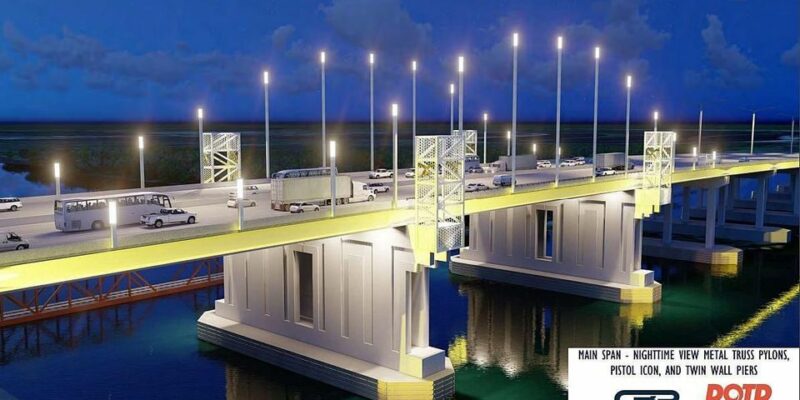It’s not perfect, but the deal the state signed this week to construct a toll bridge where Interstate 10 crosses the Calcasieu River has more plusses than minuses.
After legislative and state approval, the final step in a couple of weeks is for the state to have the State Bond Commission approve nearly a billion dollars in financing from its end. Throw in $225 million in federal funds, and that leaves $900 million for the private consortium Calcasieu Bridge Partners to foot the rest in the building, maintenance, and operating of it for 50 years. That construction could begin within weeks and it is anticipated will last seven years.
Throughout this interval, CBP will collect tolls to pay it back: the initial capital outlay, operating costs, and maintenance. Beyond those, 15 percent goes to the state, with the intention of plowing some or all of that back into subsidizing the tolls, which are indexed to inflation from their initial negotiated levels, with any of that not going to that purpose used for Lake Charles-area transportation projects.
Another strategy the state plans to pursue in reducing tolls is to have extra appropriations from itself or the federal government. Indeed, the state slowly but surely is accumulating a trust fund usable for transportation needs that could pay off a huge chunk of this, and its expanded congressional clout also might see more federal dollars steered this way. It’s possible that fortunate allocations might mean no tolling ever, if this can occur before intended startup in 2031.
The toll pricing structure offers steep discounts for enrolling into tags – long-term licenses – and for local vehicles (non-commercial in the surrounding five parishes), especially with high occupancy. The brunt of tolls supposedly long-haul travelers, particularly large trucks, will bear. A passenger car with at least three occupants with tag (HOV tags will carry a nominal fee) would pay as little as 13 cents a crossing, and even non-HOV local autos would fork over just a quarter a trip.
This marked the second attempt, and after the first fizzled an unlikely one, to have a public-private partnership succeed in replacing the old 72-year-old structure. Under Democrat former Gov. John Bel Edwards, a plan was put forward with much higher toll prices, one a legislative panel rejected.
That vastly higher user cost was the main knock against Edwards’ version that demanded a $1.3 billion payoff, especially as it would become the only bridge on the interstate highway system to have these borne and much more heavily by local traffic. Not only did his successor Republican Gov. Jeff Landry find an extra $400 million, but he also negotiated a much more favorable toll schedule for local folks that now barely costs them and wouldn’t send many scurrying around for alternate routes that eat up time and gas money.
The P3 concept does have the salutary effects of having users pay and reduces overall costs. The idea floated by Edwards after rejection was a combination of refurbishment and rolling replacement that would have been significantly more expensive and taken decades longer.
The big drawback, having tolls and especially the impact these would have on the local economy, is ameliorated enough in that these would be sufficiently minor for local travelers, if not collected in full or over the entire term or even at all. It’s something area residents and the state can live with in exchange for a better bridge at a lower cost.
Advertisement
Advertisement

